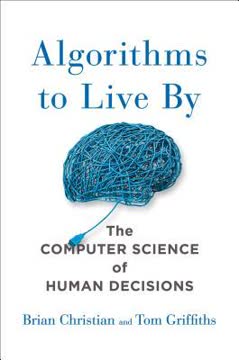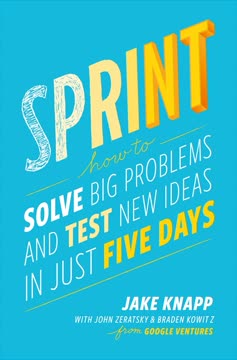Searching...
Top 10 Books for Aspiring Robot Designers and Programmers
Discover 10 essential books that will elevate your skills in robotics, programming, and game design, perfect for creating innovative solutions!
Book Summaries
The Computer Science of Human Decisions
Christian's book offers valuable insights into algorithms that can help you optimize your robot's pathfinding and decision-making processes in the maze.
3 Key Takeaways:
- Optimal Stopping: When to Commit in Life's Decisions
- Explore vs. Exploit: Balancing New Experiences and Favorites
- Sorting: The Power and Limitations of Organizing Information
How to Solve Big Problems and Test New Ideas in Just Five Days
This book provides a practical framework for rapid prototyping and problem-solving, perfect for designing your robot's path and optimizing its performance in the arena.
3 Key Takeaways:
- Define a clear long-term goal and identify sprint questions
- Map the challenge and choose a target
- Sketch competing solutions individually
Paths, Dangers, Strategies
Bostrom's exploration of AI risks and strategies is essential for understanding the broader implications of your robot's design and programming choices.
3 Key Takeaways:
- Superintelligence poses an existential risk to humanity
- Multiple paths could lead to superintelligent AI
- The control problem is crucial but extremely challenging
Unleashing the Creative Potential Within Us All
Kelley’s insights into fostering creativity can empower you to think outside the box when designing your robot and its functionalities.
3 Key Takeaways:
- Everyone has creative potential waiting to be unleashed
- Overcome fear of failure to boost creative confidence
- Empathy and human-centered design drive innovation
How to Innovate with Minimum Viable Products and Rapid Customer Feedback
Olsen's book provides a structured approach to product development that can help you refine your robot's design and ensure it meets user needs effectively.
3 Key Takeaways:
- Product Management: Building Products That Solve Real Problems
- Strategic Product Planning: Vision, Strategy, and Objectives
- Crafting an Effective Product Roadmap
Where Machine Intelligence Ends and Human Creativity Begins
Kasparov's insights into the interplay between human creativity and machine intelligence can inspire innovative approaches to your robot's design and functionality.
3 Key Takeaways:
- Chess as a unique nexus of human intellect and AI development
- The evolution of chess machines: From Deep Thought to Deep Blue
- Human vs. Machine: Kasparov's historic matches against Deep Blue
A Book of Lenses
Jesse Schell's book is a must-read for anyone interested in game design, offering insights into creating engaging experiences that can inspire your robot's programming and path optimization.
3 Key Takeaways:
- Game design is about creating experiences, not just rules and mechanics
- The elemental tetrad: Mechanics, story, aesthetics, and technology
- Balancing fun and challenge: The flow channel
A Hands-On, Project-Based Introduction to Programming
This project-based guide is perfect for beginners looking to learn Python programming, which is essential for coding your robot's navigation and object collection algorithms.
3 Key Takeaways:
- Installing and setting up Python, Pygame, and Matplotlib
- Creating basic visualizations with Matplotlib
- Generating random walks and visualizing data
Concepts, Tools, and Techniques to Build Intelligent Systems
Géron's book is an excellent resource for learning machine learning techniques that can enhance your robot's decision-making and object detection capabilities.
3 Key Takeaways:
- Recurrent Neural Networks (RNNs) enable sequence processing and prediction
- RNNs use memory cells to preserve state across time steps
- Unrolling RNNs through time allows for efficient training












